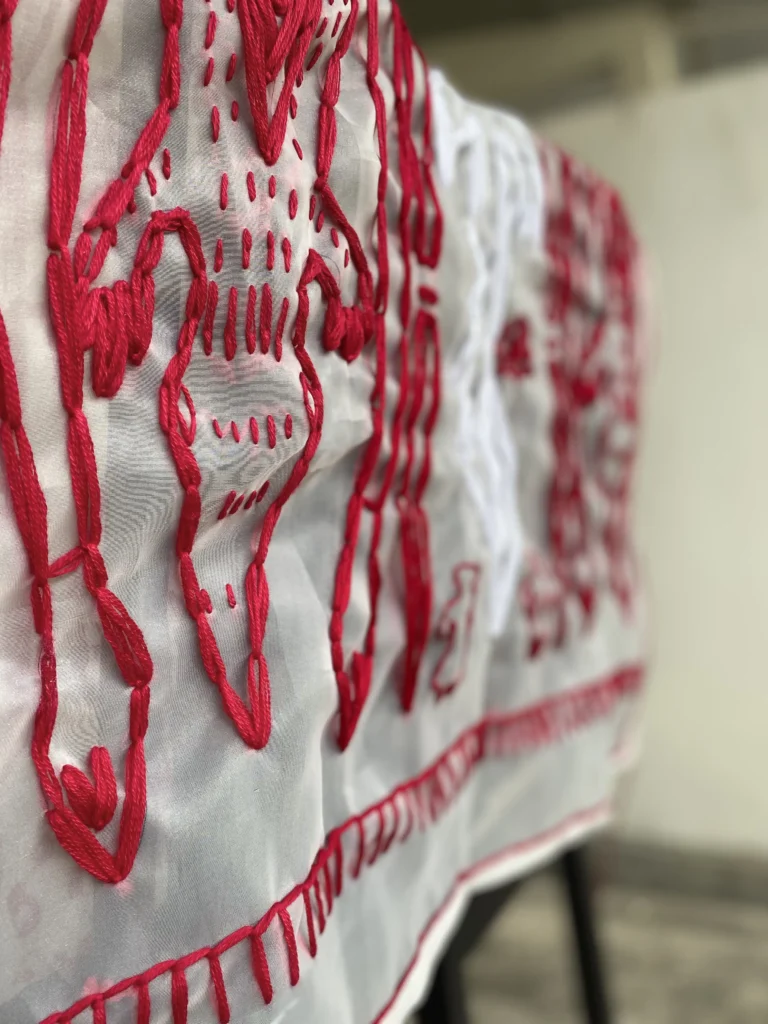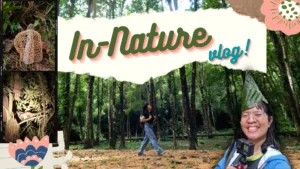“Baya Putih ari Tasek Merimbun”
Bornean Culture, especially Elroy Ramantan’s Iban Culture, inspires a lot of his artwork. The use of motifs and symbols found in the Pua Kumbu: a ceremonial cloth where the weaved fabric of patterns, animals, people and plants tell a story, heavily influenced this artwork.
The Pua Kumbu, a ceremonial cloth that normally portrays a mythological tale woven by the “Dream Weavers” of the Iban community was an essential tool of storytelling inspired by the environment were woven into the cloth
The artwork portraying the environment’s ecosystem of animals, flora and fauna found at Tasek Merimbun as well as the ethnic Indigenous Brunei Dusun tribe & community present around Tasek merimbun shows that the ecosystem consists of a symbiotic relationship that is not separate but essentially one and together.
Using his Iban’s cultural motifs normally found in The Pua Kumbu as a medium of portraying Tasek Merimbun’s mythical creature the White crocodile, where legends says it dwells in the waters of Tasek Merimbun. The legend has made Tasek Merimbun unique among other wetland areas in Brunei and in turn granting itself the title of ASEAN heritage site. With this the wetland is deemed worthy to be protected and studied, which continues the legend to live on for many to know. The cause and effect of cultural significance correlates to environmental conservation and vice versa.
Similar take of indigenous tribes of sourcing materials (both natural & contemporary materials) accessible to them when creating cultural art; the use of cotton yarn embroidered on see-through of the organza fabric slightly dyed from the tannins of the leaves found in Tasek Merimbun in portraying the significance that the environmental conservation conversely correlates to cultural longevity. The use of white yarn in portraying the legendary White Crocodile embroidered at the center stands out from the other characters in red signifies the integral role it plays for Tasek Merimbun.
Utilizing the see-through effect of the organza fabric to denote a dual meaning that signifies the failure to see the importance of environmental conservation, cultural deterioration follows suit; and the disappearance of cultural values affects our appreciation of the wetland’s environmental value for preservation. If one goes, the other follows and vice versa. The duality effect of the importance of Tasek Merimbun’s environmental and cultural value are fundamental components to each other and should not be taken lightly.
This artwork hopes to convey the relationship of cultural knowledge as one of the many tools of environmental conservation. And environmental conversation as an aid in protecting cultural practices.






















